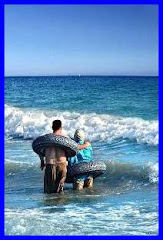



Decompression Units
Decompression units are mandatory in all areas of diving. It could mean the difference between life and death. Also, getting the patient there in time is of vital importance. It’s no use having decompression units or hospital facilities, if there isn’t any speedy and efficient way to get there! A few years ago, there was only one Decompression Unit in Sinai (and three others belonging to the Navy). Now, according to Col. Mesharafa, there are at least 7 in Sharm El-Sheikh, about four in Hurghada. Remote Marsa Allam has the latest one, installed nearly four years ago. Dahab and Nuweiba have none, but plans for installing one soon, is in effect.
Sharks
If you encounter a shark, don’t panic! If a shark comes near your body, look back at it! But, be wary if it is face to face, and will show you the narrowest part of its body; i.e. the face and both eyes. The best thing to do is to avoid putting yourself as a prey to the shark. Usually you do that by trying a fast escape, but violent movements and splashing about will create a low frequency in the water, which will attract the shark. It can swim 110 km per hour. If you can swim faster, then attempt the speedy getaway! But, the best thing is to try to swim out of the area very slowly, keeping your eyes focused on the shark. Stay calm and swim calmly. If it comes too near, push it away with any hard object, or even with your foot. This will discourage the attack.
Sea & River Crimes
Suicides
Unwanted Hero!
There are exceptions. One day, when there was a German delegation from the Red Cross, he got a duty call announcing that a young lady just threw herself into the Nile. In two seconds, Colonel Mesharafa navigated pell-mell to the scene of the suicide attempt, with the German delegation in tow, and was just in time to catch her by her hair and drag her up to safety. He performed first aid mouth-to-mouth resuscitation, and saved her life. Afterwards, he got a lot of press reviews and acclaims through the Red Cross in Germany, who thanked him for his bravery. However, the ungrateful woman accused him of saving her, and said she preferred to die!
Patrolling the Nile
Police Guard boats (at least 400, of all sizes) patrol the Nile River. Some stay afloat underneath the bridges, specifically for avoiding suicide attempts! The other boats within the Red Sea area are military boats, belonging to the navy and not the police.
Nile Pollution
According to Mesharafa, the two worst Nile pollutants are the floating hotels’ and restaurant boats’ dish and laundry detergent, as well as the chemical waste discharged from factories. He reassured me that all harmful factories have been lawfully relocated elsewhere, with the exception of one or two, where they use special filters. However, he said that the filters are not adequate for pollution prevention and added that these remaining factories will soon be shut down or relocated as well.
First Steps in Diving
“What is the very first thing you must teach your divers?” I asked, to which he replied: “The first thing one must learn in diving is how to clean the ‘mask’. That is, when water seeps through the mask underwater, one must learn how to remove the water inside without deluging the mask, then how to put it back on dry. The second lesson is how to keep your balance and buoyancy underwater, while at the same time carry your camera and equipment.”
Diving Downtown!
You can learn how to dive in the city, before going to the beach resorts! Beginners start with special training in swimming pools. In a diving center, the whole intensive course takes about 3 days: first, the students take five diving lessons in a swimming pool and then they go to Ein El-Sokhna for a one-day 15-meter dive and finish their course at Sharm El-Sheikh for the 15 to 20 meters dives. The certificate is graded in levels 1 to 3 ‘stars’, and one must earn at least a 2-star diving certificate in order to dive. The successful divers are all given diving certificates, which enables them to dive anywhere in Egypt and abroad. As for the diving instructors themselves, they also have grades 1 to 3-star certificates, but their certificates differ from the divers’ certificate, and are much more difficult to achieve.
Dive Clubs in Egypt
Underwater Photography
For those who want to learn underwater photography, they have to be extremely good divers to begin with. Photographing in the Nile is different. Visibility is ‘zero’ after 5 meters and the water is dense and murky due to the mud sedimentation. Also, the current is very strong; after three minutes in the water, you find yourself pulled two or three kilometers downstream.
Photography Competition Category:
To participate in international underwater photography competitions, you must produce three types of photos:
1. Wide Angle
2. Close-up
3. Marine Life (this may, or may not, include a diver in the scenery)
Each diver has to have at least four films available. Out of the four films, only 6 photos in will be selected to enter a competition. Then the panel of judges will evaluate each diver’s selection, along with all the other competitors.
To conclude the interview, I asked Col. Sameh Mesharafa if he had a choice to start from the beginning, what would he have chosen to be? He answered with his radiant smile: “I think I would prefer to be simply a diving instructor!”
Cave & Wreck-Diving
Cave and wreck-diving are advanced diving skills; they have their own training. But in this article I will not elucidate on what type of training should be followed. Instead, I will give the diver a few tips that I feel are necessary. If you are tempted to enter one of the caves or wrecks, then I strongly feel it necessary to adhere to these tips for your safety. It is important for a diver to overcome any temptation to enter an underwater cave or wreck, without the proper preparation.
Diving is usually done in pairs, but there are some cases which require a smaller or bigger number of divers. A lone diver is strictly for military purposes, and is enacted in E.O.D. (explosive ordinance disposal). The reason for being performed as a one-man dive is obvious: if the ordinance he is dealing with exploded for any reason, then there would be only one casualty, instead of more. A three-man dive group would be preferable, in my opinion, for underwater caves and wrecks diving. Divers should always play it safe. A minimum of three persons is also an essential safety procedure for exploring underwater caves and wrecks.
How do you dive into a cave or wreckage?
Preparations and supplies:
1. All divers diving inside caves or wrecks should have each two flashlights, one for use, and the second as a spare.
2. The diving team should have an extra diving tank with a regulator mounted on it, and ready to use if needed.
3. Floats (similar to that used on fishing nets) should be attached at every three meters on a thin rope 150 meters long. I suggest that the floats should be painted half-red and half- white.
4. An underwater navigation compass should be at hand.
What to do prior diving into caves or wrecks:
If you are diving in a group of three, five or even seven, one diver should remain outside the entrance of a cave or wreck with the extra diving tank and regulator. If for any reason a diver is jammed or trapped inside, this extra tank could buy him time for getting help. The diver stationed outside the cave (or wreck) is the ‘safety diver’ for the rest of the team. It is a boring, but necessary job.
The 150-meter rope should be fixed at the entrance of the cave (or wreck) in a way that reveals the white side of the float facing towards the exit. This will allow any diver who got separated from the rest of the group inside the cave to know which way is out, simply by following the direction of the white side of the floats; in panic or an emergency, you may easily lose direction.
How do you swim inside the caves and wrecks?
Methods and precautions:
1. On entering the cave, always swim near the roof of the cave, and never near the bottom, because:
2. Swimming near the bottom will stir the sand with your fins, which will cause poor visibility for your friends who are already in a confined and low visibility area;
3. Sometimes there are creatures that inhabit these caves, and when you enter the cave near the bottom, you might frighten these creatures, causing them to flee from you and create panic to the divers – (they always escape near the bottom and might run into you if are also there);
4. Some caves may have weak roofs that are near collapsing stages. (Although I have never witnessed such caves in the Red Sea, we should take all possibilities into consideration.)
5. Collapsing parts of the roofs of caves sink slowly towards the bottom, due to the water resistance. So, if you are near the roof, you may have time to avoid being trapped under, unlike if you are closer to the bottom.
6. Take care in trying to pass through some caves’ entrances – always go in with your feet first, and never with your head, because the passage may become narrower. You will get jammed and your fins won’t help you back out, as fins give a forward movement only.
When should divers terminate the cave or wreck dives?
In cave/wreck-diving, divers start to terminate the dive when the pressure inside the tank reaches “120 bar”. You should never wait until the reserve reaches “50 bar”, for it might not give you time enough to exit the cave or reach the surface safely.
In conclusion, it pays to pay attention to safety! After all, you are diving for fun, aren’t you?
Courtesy of Dr. M. Raghid El Maarry (hyperbaric medical specialist and marine toxicologist)
























































































































